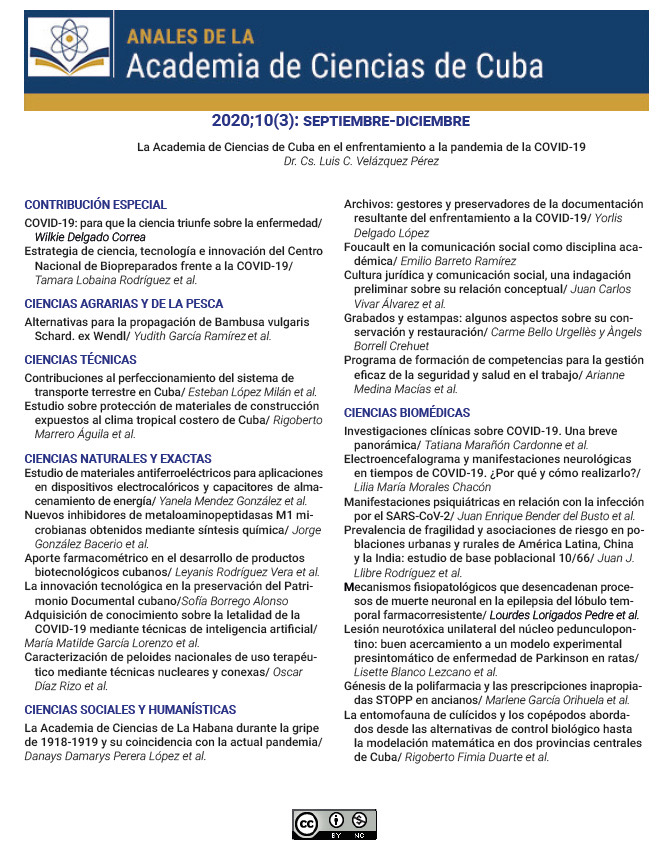The Role of Pharmacometrics in the Development of Cuban Biotech-derived Drug Products
Keywords:
Erythropoietin-pegylated, Pharmacometrics, Pharmacokinetic, Pharmacodynamic, Nimotuzumab, NONMEMAbstract
Introduction. Pharmacometrics is a vibrant scientific discipline that involves a cycle of excellence: integration, innovation and impact. Objectives: To assess different pharmacometric approaches in three Cuban biotechnological products.Methods. A population pharmacokinetic analysis of nimotuzumab was performed in patients with stage III breast cancer. A set of doses was combined with doxorubicin and cyclophosphamide. Besides, a pharmacokinetic/pharmacodynamic (PK/PD) analysis of Recombinant Human Erythropoietin pegylated branched 32 kDa-PEG-rHuEPO and 40 kDa-PEG-rHuEPO was conducted and compared with reference products (ior®EPOCIM and MIRCERA®) in NZ rabbits. Data were analyzed using the nonlinear mixed-effect approach (NONMEM®).
Results. The best model for nimotuzumab was the Quasi Steady State approximation of the full Target Mediated Drug Disposition model that best described the linear and nonlinear PK. The recommended optimal biological dose ranged between 200-400mg/week. On the other hand, a cell transit semi-mechanistic PK/PD model for characterizing EPOhr profiles was obtained. The development of new branched PEG-chains formulations of EPOhr improves its PK and PD properties, compared to that in commercially available formulations (i.e., ior®EPOCIM and MIRCERA®). Due to its integrative nature and predictive value, population modeling was very useful in the optimal characterization of the pharmacokinetic and pharmacodynamic properties of these three Cuban biotech drug products. It had a significant impact on decision-making by both the national regulatory agency and local biopharmaceutical industry as to their research and development plans as well as the subsequent marketing strategies for these new products, with substantial economic and time savings.
Downloads
Published
How to Cite
Issue
Section
License
The journal Anales de la Academia de Ciencias de Cuba protects copyright, and operates with a Creative Commons License 4.0 (Creative Commons Attribution-NonCommercial License 4.0). By publishing in it, authors allow themselves to copy, reproduce, distribute, publicly communicate their work and generate derivative works, as long as the original author is cited and acknowledged. They do not allow, however, the use of the original work for commercial or lucrative purposes.
The authors authorize the publication of their writings, retaining the authorship rights, and assigning and transferring to the magazine all the rights protected by the intellectual property laws that govern in Cuba, which imply editing to disseminate the work.
Authors may establish additional agreements for the non-exclusive distribution of the version of the work published in the journal (for example, placing it in an institutional repository or publishing it in a book), with recognition of having been first published in this journal.
To learn more, see https://creativecommons.org






